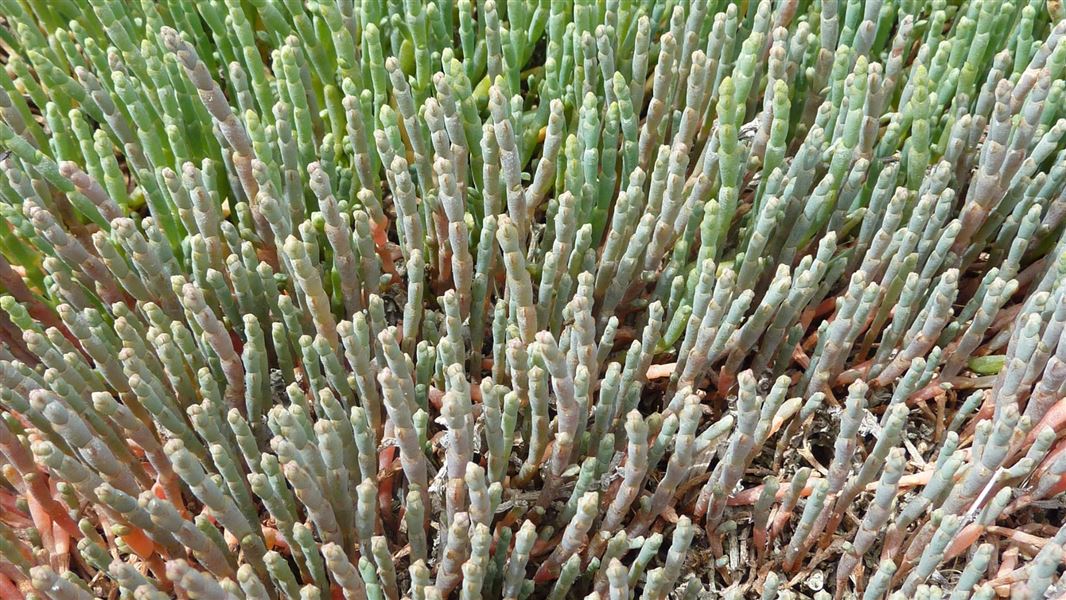It grows just below and above the high tide mark, where it gets submerged by the sea, dried by salty air, pounded by waves and trampled by animals.
Glassworts secret to survival is its thick, fleshy stems, with leaves that are shrunk down to tiny bumps.
Look out for the UrbanNature glasswort panel on Portsmouth Drive in Dunedin.
Image gallery
Glasswort's hardiness allows it to grow where few other plants can compete with it, and it's found around much of New Zealand's coast. A surprising find is that it also grows in the Maniototo plain in Central Otago, about 70km inland!
Why is it found so far inland? The answer lies in the special soils found in parts of Central Otago. Over millions of years, salts eroded from rocks and accumulated deep in the soil, and because Central Otago is so dry, these salts weren't washed out by the rain. In places, patches of this ancient salty soil became exposed at ground level, and whole communities of tiny native plants and insects developed on it.
These species usually have a close relative growing in coastal areas, and may have originated from seeds carried inland by birds. When the birds landed on the patches of salty ground (which would have been like nice, open landing strips in the middle of tussock and shrubland), the seeds fell off into an environment similar to their coastal soils. They started growing and, evolving to their new habitat, gradually became distinct species.
Whether this is how they originated or not, many of these species are now among the most threatened in the country. This is because their fragile saline habitat has been reduced by introduced weeds, animals, and some farming practices such as irrigation.
Did you know?
- Glasswort gets its common name because it used to be burnt to produce 'soda ash', which was used in glassmaking.
- Its Latin name is Sarcocornia quinquiflora, referring to its fleshy stems, and five-parted flowers.
- Its Māori name is ureure.
